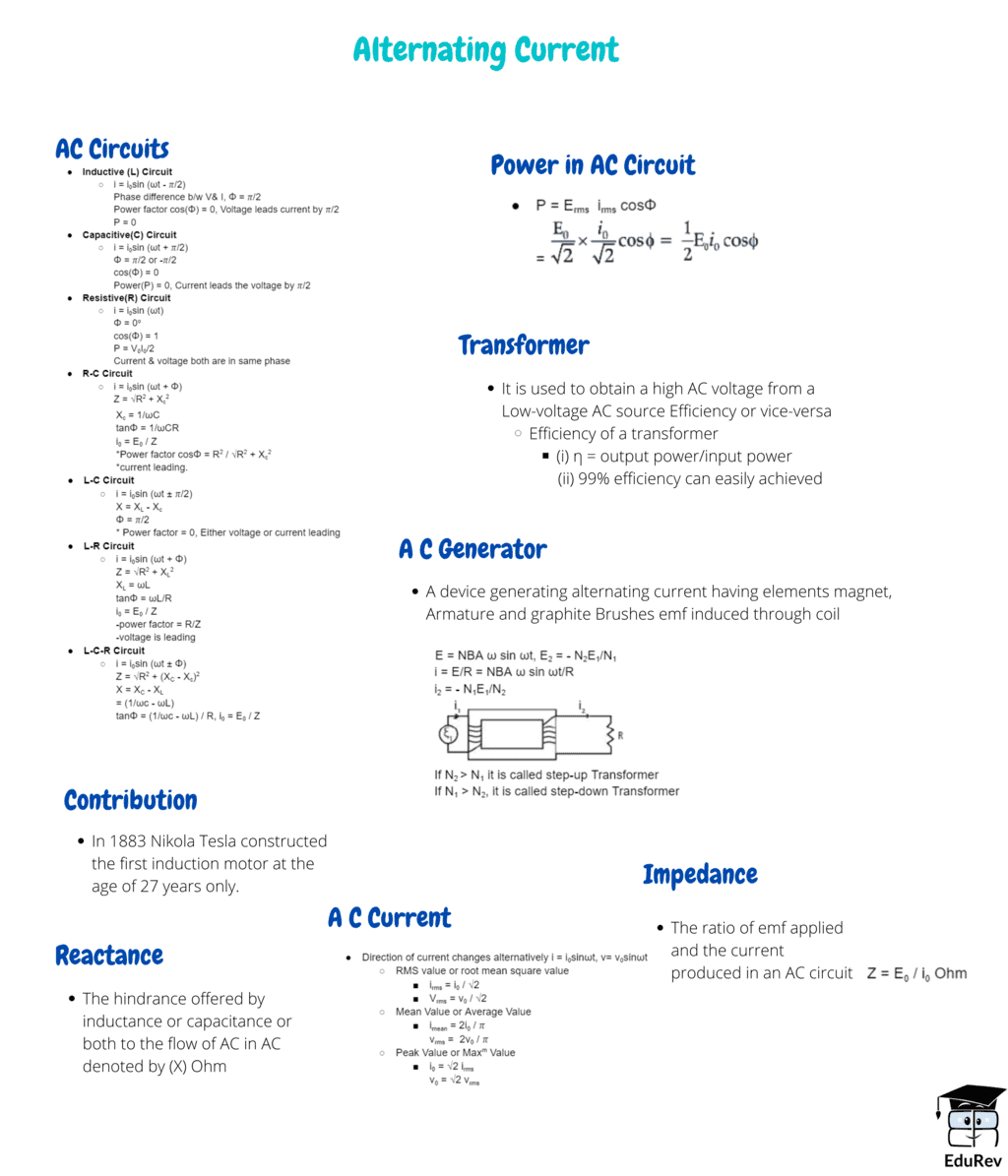NEET Exam > NEET Notes > Physics Class 12 > Mind Map: Alternating Current
Mind Map: Alternating Current | Physics Class 12 - NEET PDF Download

The document Mind Map: Alternating Current | Physics Class 12 - NEET is a part of the NEET Course Physics Class 12.
All you need of NEET at this link: NEET
|
74 videos|314 docs|88 tests
|
FAQs on Mind Map: Alternating Current - Physics Class 12 - NEET
| 1. What is alternating current (AC)? |  |
Ans. Alternating current (AC) is an electrical current that continuously changes its direction. It flows back and forth in a circuit, periodically reversing its polarity. This is in contrast to direct current (DC), which flows in only one direction.
| 2. How is alternating current produced? |  |
Ans. Alternating current is produced by an electrical generator or alternator. The generator consists of a rotating magnet or coil within a stationary coil. As the magnet or coil rotates, it induces an alternating current in the stationary coil through electromagnetic induction.
| 3. What is the advantage of alternating current over direct current? |  |
Ans. One advantage of alternating current over direct current is that it can be easily transformed to different voltage levels using transformers. This allows for efficient transmission of electricity over long distances. Additionally, AC is safer to use in high-power applications due to its ability to be easily controlled and switched off.
| 4. How does alternating current affect electrical appliances? |  |
Ans. Electrical appliances are designed to operate on either alternating current (AC) or direct current (DC), depending on their specific requirements. AC-powered appliances utilize the changing voltage and frequency of AC to operate, while DC-powered appliances require a constant voltage and polarity. It is important to ensure that appliances are connected to the correct type of current to avoid damage.
| 5. Can alternating current cause harm to humans? |  |
Ans. Alternating current has the potential to cause harm to humans if not handled properly. High-voltage AC can pose a risk of electrical shock, while low-voltage AC can cause muscle contractions and other physiological effects. It is important to follow electrical safety guidelines and use proper insulation and protective equipment when dealing with AC circuits to minimize the risk of harm.
Related Searches
















